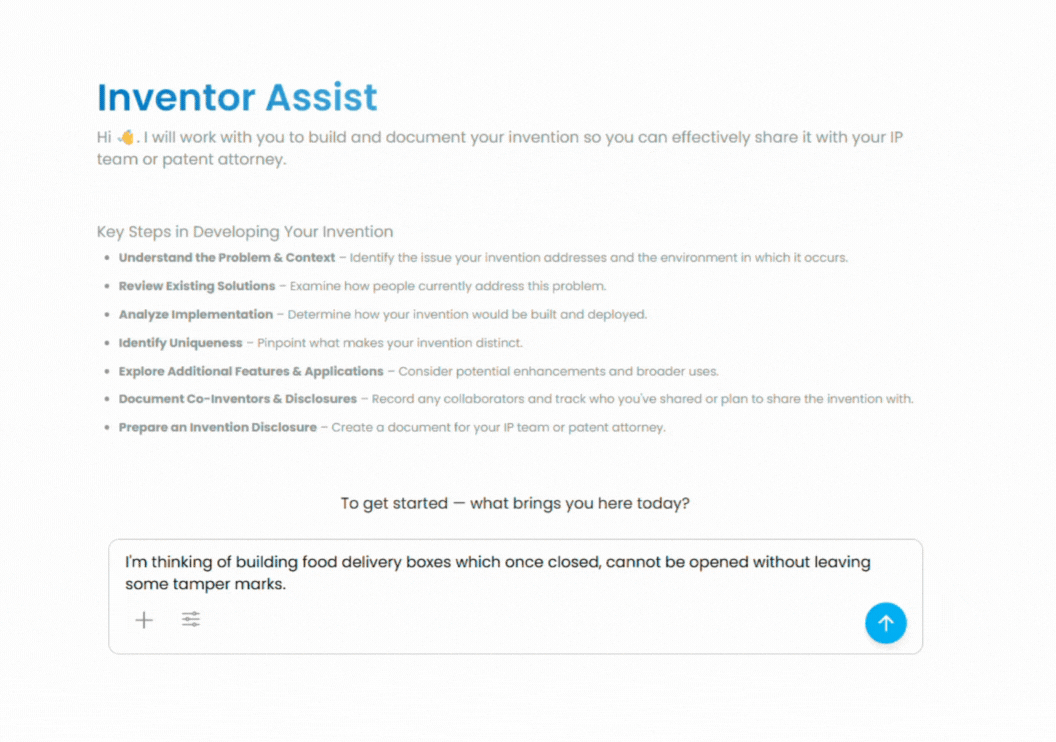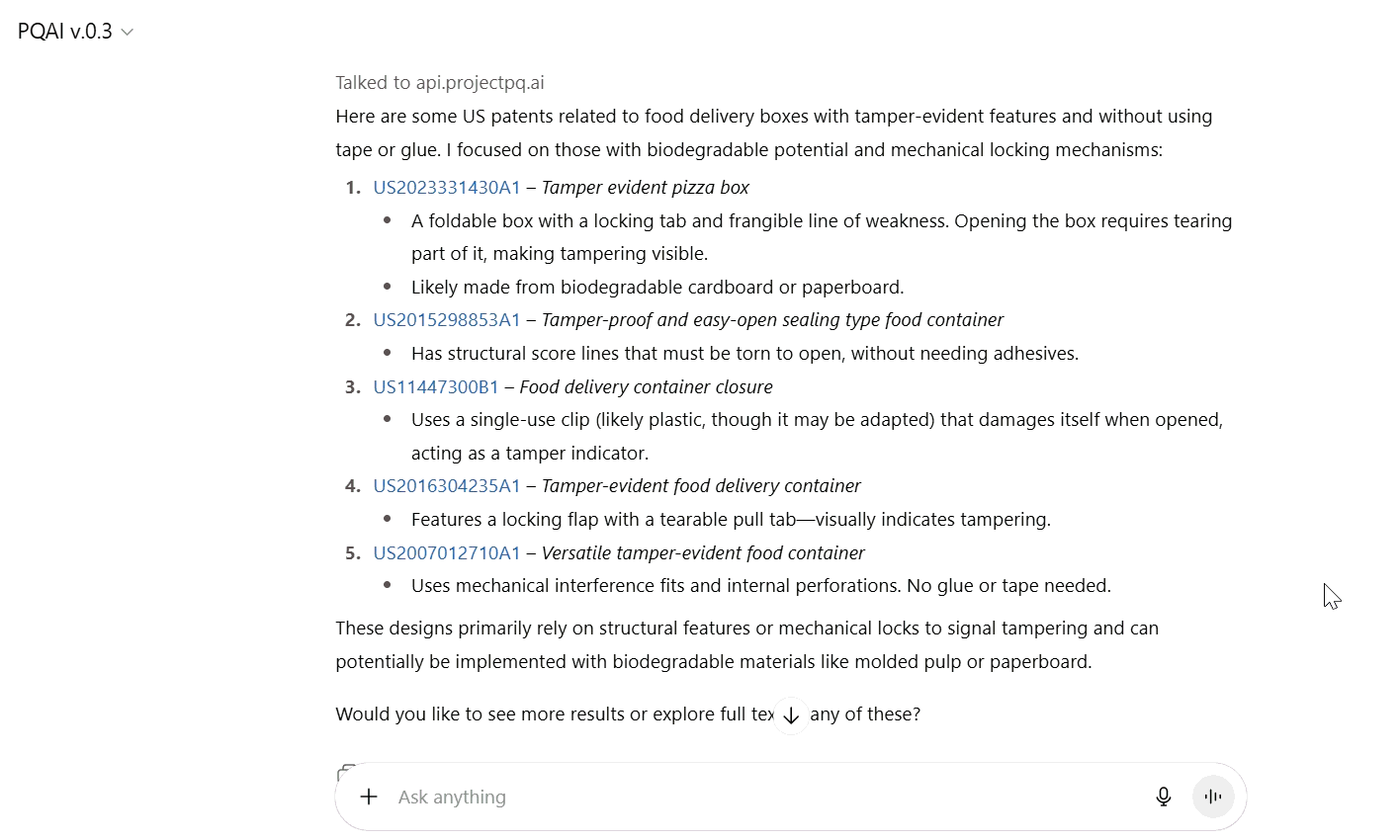by Sam Zellner
I myself used legacy systems long before InspireIP existed.
Back then, it was the tool of choice for managing patent portfolios at scale.
Docketing, compliance, audits, it did the job, and it still does.
In fact, most enterprises continue to use Anaqua or similar systems from Clarivate or Symphony.
But something changed over the years.
Actually, over the past decade, innovation itself has shifted.
And organizations began realizing that managing patents wasn’t the real bottleneck anymore.
The real challenge and the real opportunity starts much earlier.
Inside teams, R&D labs, business units, inside universities, where ideas are born and need to be captured, evaluated, and converted into strong IP.
And that’s when a question started coming up over and over:
“Why isn’t anyone building a tool that helps upgrade the early phases of innovation or IP?”
It wasn’t that the idea of invention capture didn’t exist.
But what we were doing, the traditional ways, spreadsheets, emails, chats, manual invention disclosures, and unstructured submissions couldn’t cut it anymore.
Tools like Anaqua, AppColl, Clarivate, and Symphony were doing great work managing patents and IP portfolios. But they weren’t designed for the front-end of innovation.
We saw an opportunity to make it easier to go from generating and capturing ideas to disclosing & protecting inventions
And that’s why we built InspireIP.
What you’ll find in this case study:
- A clear explanation of how InspireIP and Anaqua serve different purposes, and where their capabilities now overlap.
- Why InspireIP is the stronger choice for early-stage innovation, idea capture, and invention disclosure.
- Where Anaqua still leads, especially in docketing, portfolio management, compliance, and large-scale filing.
- How InspireIP helps teams take action on ideas, while Anaqua provides legal and audit-focused workflows.
- Why using both tools together can offer the most complete IP and innovation strategy.
A Question I Get All the Time
One of the most common questions I get is:
“Sam, why InspireIP over Anaqua or AppColl?”
The short answer?
We didn’t build InspireIP to compete with them.
We built it to solve a completely different problem.
While Anaqua, Clarivate, and Symphony focused on patent management, docketing, and patent audits, we focused on something they didn’t:
- Helping teams generate better ideas
- Capturing 4x more patentable ideas
- Solving innovation challenges
- Structuring invention disclosures impactfully
- Making attorney handoff smooth & frictionless, and filing faster
And over time, the market shifted.
Organizations started realizing that innovation ROI and early-stage idea capture were just as critical as portfolio management.
And now? There are areas where we actually do compete.
The difference is that we’ve been focused on this niche for six years, while others are only starting to explore it.
So I actually like that question.
Because in the world of early-stage innovation management, InspireIP has a head start. A big one.
Where InspireIP Wins
There are lots of IP management tools. But very few are built specifically to help teams capture, evaluate, and convert ideas into strong invention disclosures.
Here’s what makes InspireIP different, and why teams choose it to power their innovation workflow.
If your job is to generate ideas and turn them into patentable inventions, InspireIP is built for that.
1. Innovation Capture Where Ideas Happen
Most IP systems ask inventors to manually submit disclosures or fill forms in standalone portals.
That’s not innovation management, it’s more of friction.
And honestly? That’s not how modern teams work.
Ideas are born in meetings, Slack threads, collaborative docs, or even casual brainstorming sessions. InspireIP meets inventors right where they are, so no good idea gets lost.
Our platform captures these ideas seamlessly, integrating with favorite workplace tools while structuring them for quick implementation or scaling them into IP.
Inventors don’t have to stop their workflow, they just capture what they know, and InspireIP does the rest.
2. Structured Invention Disclosure That Actually Works
Once an idea is captured, our Inventor Assist (an AI assistant made specifically for inventors) helps turn rough notes into structured, implementation-ready ideas and IP-ready invention disclosures.
Compare that to legacy tools like Anaqua, which focus primarily on portfolio tracking, docketing, and compliance.
Anaqua’s disclosure module is mostly a structured repository. It collects submissions, but it doesn’t guide inventors on completeness, clarity, or filing readiness.
The thing is that InspireIP thinks like an inventor and like an attorney.
We don’t just check for form fields or attached documents: we help flag strong ideas, evaluate for clarity, novelty signals, prior art relevance, and readiness for filing.
This means disclosures are actionable. Attorneys can review and file faster, with fewer iterations.
You get to work out the gaps in the disclosure, like missing technical details, incomplete descriptions, or potential prior art conflicts, so inventors can fix them before review.
They can improve their disclosure right in InspireIP, with Inventor assist.
Whether it’s hardware, software, biotech, or process innovation, InspireIP adapts to your workflow and helps make disclosures stronger.
This is what modern innovation management looks like:
- Data-backed
- Intuitive
- Role-aware (inventor, manager, attorney)
- High-quality & filing-read
- Fast inventor-to-implementation workflow
In our experience across companies, disclosures optimized in InspireIP are significantly more complete, reducing attorney review time and speeding up filing.
By the way, Anaqua’s system is excellent at managing large portfolios, it just doesn’t provide this inventor-first approach.
3. AI That Works for Real Innovation
Most “AI for innovation” today is either experimental or overhyped. Maybe this is why everyone is still starkly divided into two camps: ready for AI and AI-wary.
AI is Fast? Sure. Smart? Yep.. But reliable and policy-compliant? Often not.
InspireIP’s AI is responsible. It’s built to assist you, not replace you. You stay in charge, while the AI helps you move ideas from rough notes to actionable, IP-ready inventions.
And your IP, your data is strictly confidential.
Whether you’re brainstorming new concepts, drafting an invention disclosure, evaluating ideas for impact, or running a prior art search, our AI works on your terms:
- You use it where and when you want, it doesn’t force a workflow.
- It respects your IP policies, ensuring that all AI workflows fit within your organization’s rules.
- It helps flag the strongest ideas, so you can prioritize what matters most.
- It checks for novelty and prior art, giving your disclosures a head start before they reach legal review.
Think of it like an assist for innovation.
You provide the direction, the AI helps clear obstacles, fill gaps, and suggest improvements without taking control away from you.
For example, when drafting an invention disclosure, you might have a rough idea or some scattered notes.
InspireIP AI helps structure that content, ensures all key elements are covered, and flags potential areas for clarification all while keeping you in control.
It’s about making inventors more effective.
And that’s why teams who adopt InspireIP consistently capture higher-quality disclosures, move ideas faster through review, and increase their overall innovation ROI.
4. Automated Innovation Tracking
The biggest challenges innovation teams face are either knowing where to start or knowing where they are.
- Which ideas should we prioritize?
- Which disclosures are ready for review or filing?
- What’s stuck in review and why?
Most organizations have plenty of promising ideas that never make it past rough notes.
A little structure and insight can turn them into actionable, high-impact inventions. That’s why we built InspireIP’s Innovation Tracking.
It captures and organizes all your ideas and disclosures, then helps you:
- Prioritize the strongest opportunities with AI-assisted evaluation
- Visualize progress from brainstorming to invention disclosure to attorney handoff
- Spot bottlenecks so teams can take action and keep ideas moving
Notifications and updates keep your team aligned.:
- New ideas submitted and their evaluation scores
- Disclosures ready for review or filing
- Progress against your innovation goals
This way, teams always know what to focus on next, can reduce bottlenecks, and ensure that the best ideas actually make it to implementation and filing.
5. Collaboration That Scales Naturally
One of the biggest differences between InspireIP and legacy IP tools like Anaqua or AppColl isn’t features, it’s how we approach collaboration.
Legacy tools often make collaboration expensive and rigid.
Adding another law firm, external counsel, cross-functional team member, or review committee? That can cost hundreds of dollars per seat.
It turns what should be a natural part of innovation into a budgeting headache.
InspireIP takes a different approach.
We built our platform around the principle that innovation is inherently collaborative.
Adding team members, whether internal inventors, co-inventors, cross-functional colleagues, IP teams, external counsels, or review committees, is free.
Everyone can participate where it makes sense, without worrying about seat limits or hidden costs.
On top of that, InspireIP makes collaboration intuitive and actionable:
- On-platform chatting so inventors, managers, and legal reviewers can provide context-specific feedback
- Notifications and dashboards to ensure nothing gets missed in the innovation pipeline
- Custom workflows support evaluation, disclosure, and filing processes without breaking the team flow
- Seamless integrations with collaboration tools your team already uses, so idea capture happens naturally without disrupting workflows
The result? Teams can work together naturally, not constrained by licensing fees or artificial limits. Collaboration becomes a built-in part of innovation, not an afterthought.
Where Legacy IP Tools Still Work Best
1. Global Docketing & Compliance
These platforms are built for large-scale legal environments. If your priority is tracking global filings, deadlines, and detailed IP compliance across multiple jurisdictions, they’re extremely robust. Their dashboards can show you exactly what’s due, where, and for whom, which is invaluable for IP teams handling hundreds of filings.
For instance:
- Anaqua excels at tracking complex deadlines across multiple jurisdictions.
- For teams managing hundreds or thousands of patents and trademarks, the system ensures nothing slips through the cracks, with alerts for renewals, annuities, oppositions, and deadlines.
InspireIP doesn’t aim to replace that level of compliance depth. Instead, we focus on capturing and advancing ideas to the IP portfolio.
2. Formal Legal Workflow Management
Anaqua supports end-to-end legal processes, including formal approval chains, signature tracking, and legal review assignments.
This is critical for companies that require strict adherence to legal processes and audit trails.
InspireIP helps you prepare invention disclosures and ideas for IP filing but doesn’t replicate every legal workflow step.
3. Document & Contract Management at Scale
Legacy tools often include robust document management for patents, trademarks, licensing agreements, NDAs, and other legal contracts.
They integrate version control, access restrictions, and audit-ready logs, which can be essential for large IP portfolios.
InspireIP vs. Legacy IP Tools: Feature Comparison
Choose the Tool That Works for How You Innovate
Most innovation teams don’t need 50 modules.
They need the handful that actually move ideas from concept to IP, efficiently, consistently, across the workflows they run every day.
If your team is focused on capturing ideas, evaluating them, turning them into implementation-ready projects, and filing invention disclosures, InspireIP is purpose-built for that.
It’s not trying to do everything. It’s focused and better because of it.
- InspireIP doesn’t just store ideas, it captures them where they happen, whether that’s Slack, email, Miro, or your favorite brainstorming tool.
- It doesn’t just flag ideas, it helps you prioritize, refine, and move them to IP-ready invention disclosures using Inventor Assist AI.
- It doesn’t just track progress, it gives you actionable dashboards on your inventor engagement, innovation pipeline, evaluation status, and disclosure readiness.
Meanwhile, if your work revolves around global docketing, renewals, complex IP portfolio management, or legal compliance, legacy tools like Anaqua or AppColl are still the go-to.
They offer robust tracking, document control, and enterprise-level compliance features that InspireIP doesn’t aim to replace.
So what’s the answer?
Use both if you need the full spectrum of IP management. That’s what many of our customers do.
But if you’re choosing a tool to run your innovation operation, InspireIP is the OS that’s actually built for that job.
It doesn’t stop at features. InspireIP’s usability and flexibility are a huge part of why teams stick with it.
It’s focused. It’s effective. And it is 100% inventor-approved.
If you can use both, you get the best of both worlds.
If you have to choose one for driving innovation?
Make it InspireIP.











